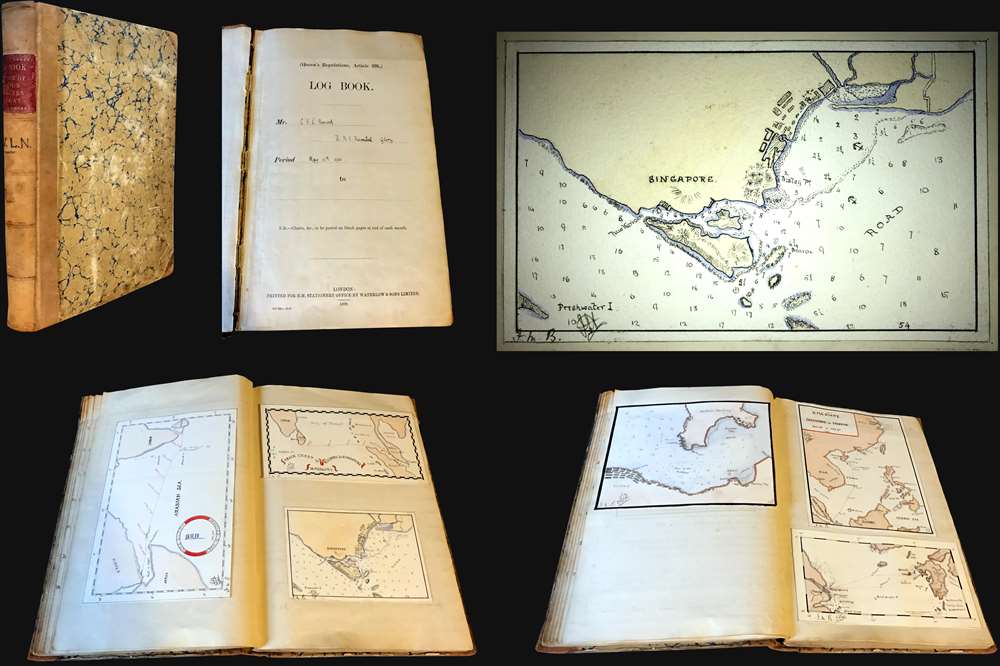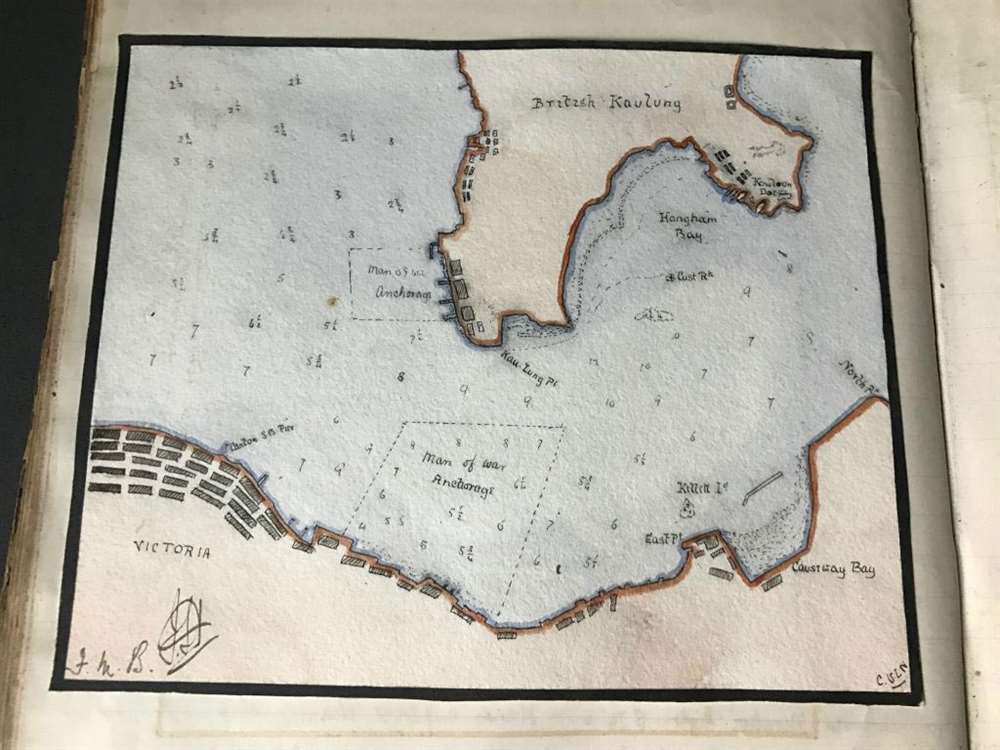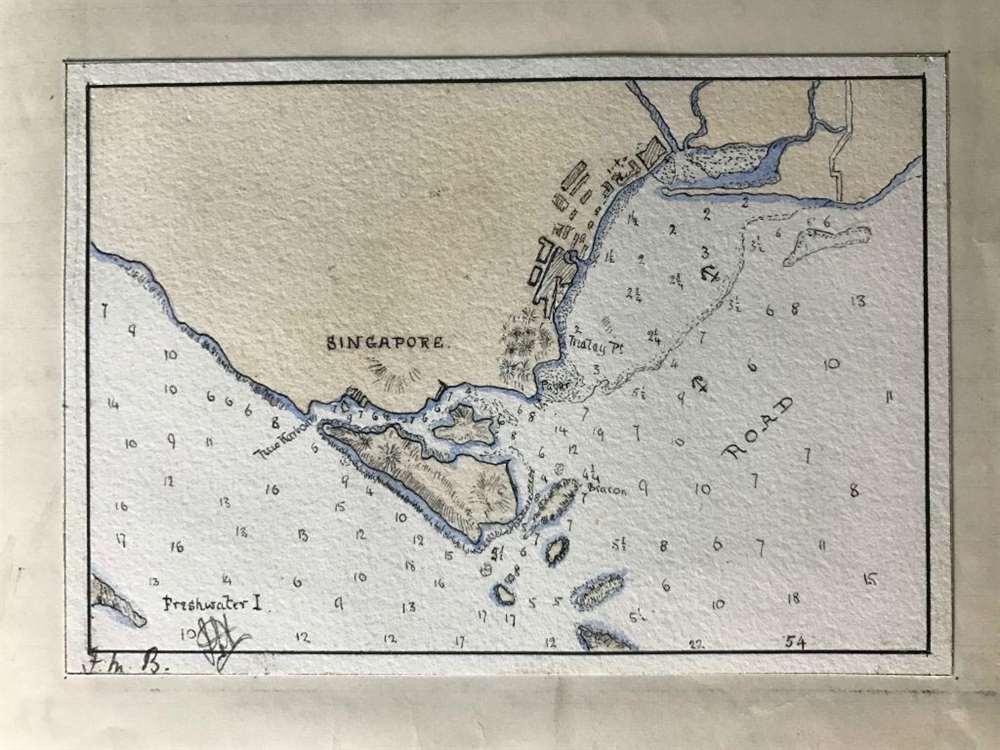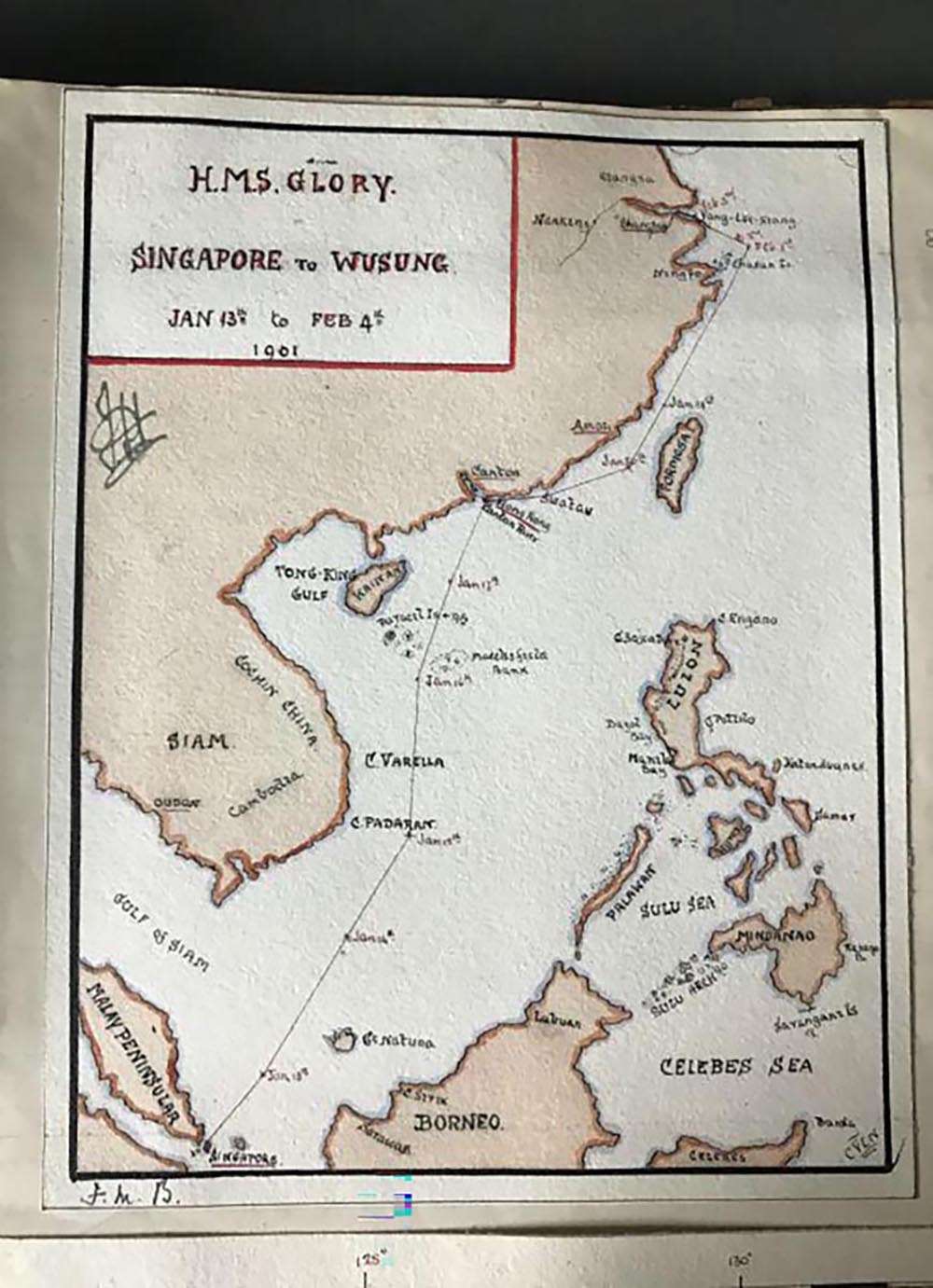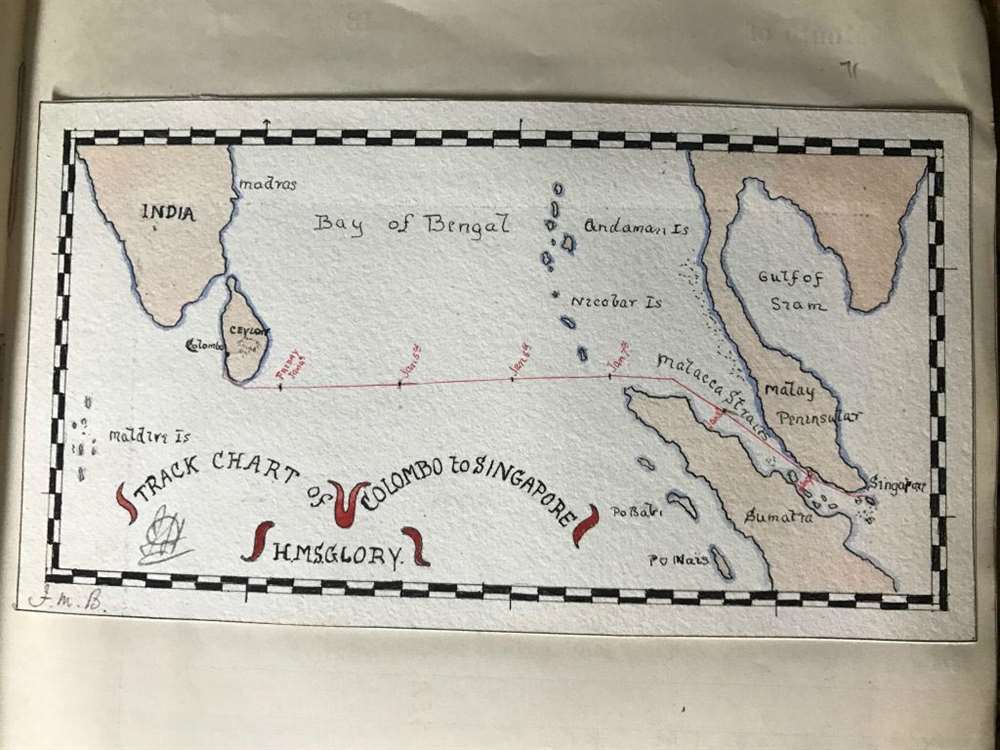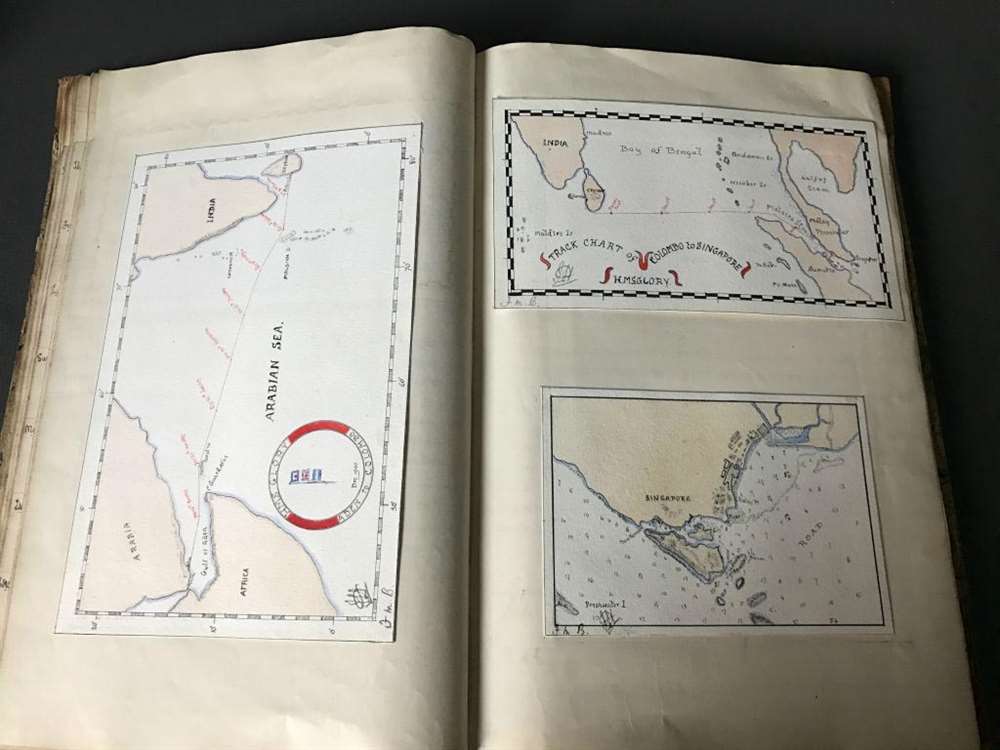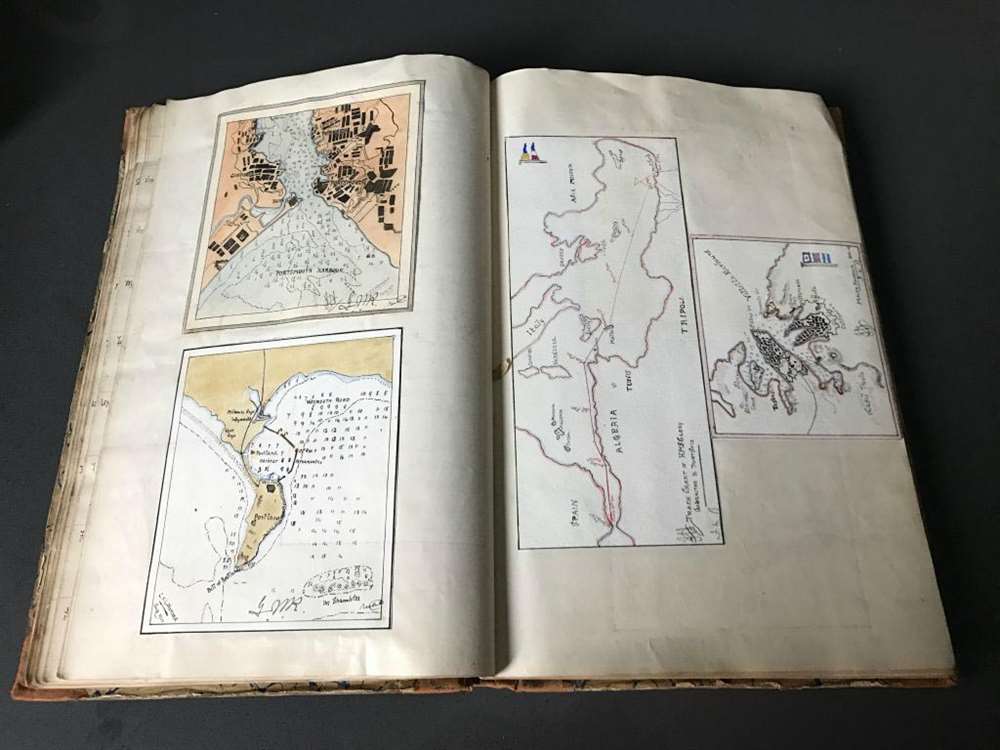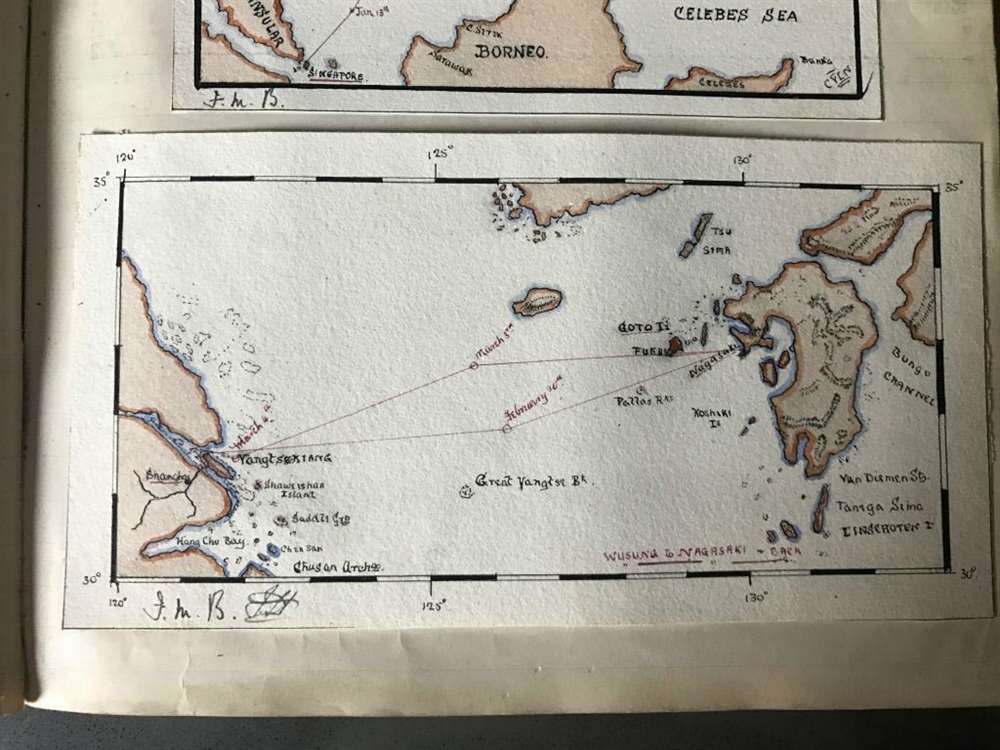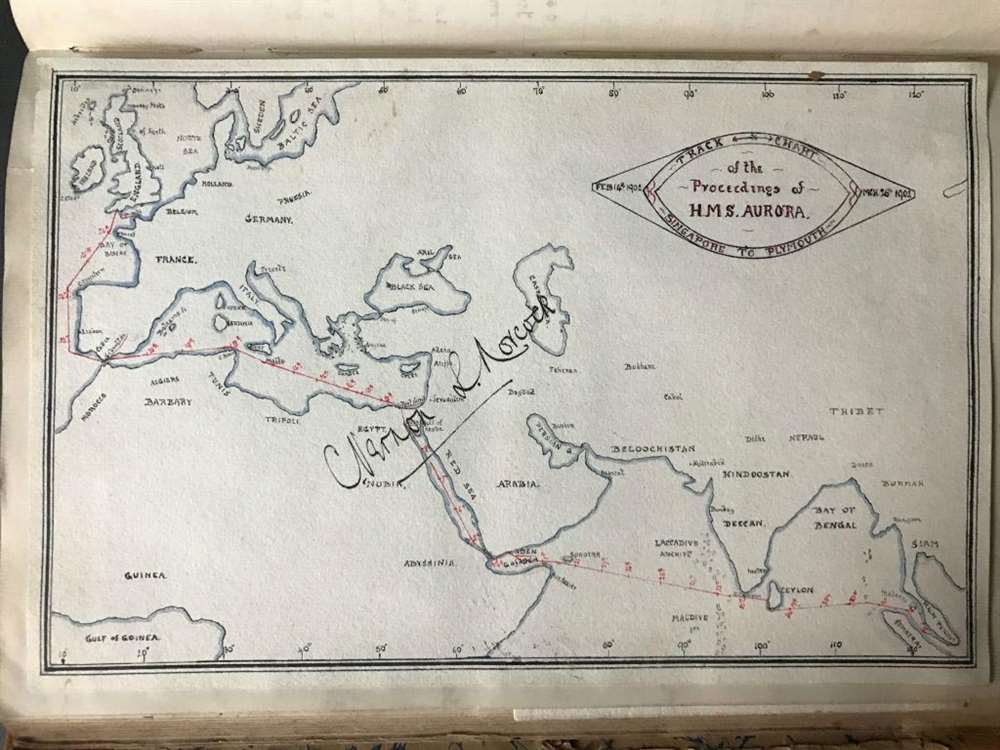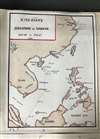This item has been sold, but you can get on the Waitlist to be notified if another example becomes available.
1901 Norcock Logbook of HMS Glory, w/maps of Singapore, Hong Kong
GloryLogBook-norcock-1901$4,750.00

Title
Logbook for use of Junior Officers Afloat. C. V. L. N. / Log Book. Mr. C. V. L. Norcock / H.M.S. Hannibal Glory.
1901 (dated) 13.75 x 9 in (34.925 x 22.86 cm)
1901 (dated) 13.75 x 9 in (34.925 x 22.86 cm)
Description
An exceptional and important 1900 – 1902 British naval logbook penned by Charles Vernon Lowcay Norcock (1884 - 1963), an officer in the Royal Navy, recording his experience as a Midshipman on the HMS Glory, flagship of the China Station, in the years of and immediately following the Boxer Rebellion (1899 - 1901). The full logbook covers three ships, recording the voyages of the HMS Hannibal from May to November of 1900; Norcock's subsequent service on the HMS Glory, flagship of the China Station from October of 1900 to January of 1902; and his return voyage to England on the HMS Aurora, from January to February of 1902 - thus covering Norcock's full tour of duty. The content of this volume is exceptionally rich, surpassing most other logbooks, with numerous original manuscript maps of important East Asian ports including Hong Kong, Shanghai, Singapore, Kowloon, Nagasaki, Suez, Valetta, Wusong (Shanghai), Nagasaki, and more.
Logbook
The bulk of the logbook focuses on the HMS Glory, a Canopus class battleship commissioned in 1900 as the flagship of the China Station. The 'China Station' refers to the British Royal Naval forces in East Asia and operated out of bases in Singapore, Hong Kong, Wusong (Shanghai), and Wei Hei. It was active from 1865 until 1941 with the mission, often in cooperation with other international interests, to patrol China's coastlands and inland navigable river systems in order to keep the region stable for trade.HMS Glory and the Boxer Rebellion
The HMS Glory and Norcock were active in China Station during the final stages of the Boxer Rebellion (1899 - 1901), a violent proto-nationalist anti-imperialist uprising. Chinese nationalists of the Yihequan (Righteous and Harmonious Fists) Army embraced the belief that they were impervious to western weaponry. They assaulted the foreign legations in Beijing, Nanjing, and elsewhere in China, killing many foreigners and Chinese Christians. The Rebellion was rapidly and aggressively suppressed by the very effective foreign weapons wielded by an 8 nation alliance of western powers, consisting of Japan, Russia, the United Kingdom, France, Germany, Austria-Hungry, the United States, and Italy. At this time, the HMS Glory was primarily stationed in Wusong, a British naval station near Shanghai, where it provided a strong British naval presence at the mouth of the Yangtze River trade artery. Norcock's log notes immense international naval activity in the region, much of it doubtless in response to the Boxers. He notes battleships flying the colors of the United States, Germany, Austria-Hungary, Italy, and Russia, among others.Manuscript Maps
Much of this logbook's richness stems from its extensive and meticulously executed collection of original manuscript maps tabbed into the volume. All are signed by Norcock and many provide unique cartographic data, probably from Norcock's own ship soundings or copied from other manuscript material in the China Station collection. Some of the more interesting charts detail Singapore, Hong Kong (with details of the Central / Wan Chai), and the rarely mapped Tolo Harbor, Hong Kong.Manuscript Maps Continued
A catalog of manuscript maps with links to images:- Bantry Bay, Ireland
- Cornwall, England
- Western Europe – with track of the Glory from Portsmouth to Gibraltar
- Gibraltar
- Portsmouth, England
- Portland, England
- The Mediterranean – with track of the Glory from Gibraltar to Port Said
- Valletta, Malta
- Arabian Sea – with track of the Glory from Aden to Ceylon
- Bay of Bengal – with track of the glory from Colombo to Singapore
- Singapore (with soundings)
- Suez Canal
- Aden, Yemen
- Victoria and Kowloon, Hong Kong w/soundings
- Singapore to Wusong – with track of the Glory from Singapore to Wusong (Shanghai)
- Track of the Glory from Wusong to Nagasaki
- Nagasaki Harbor, Japan
- Hole in side of HMS Centurion
- Yokohama Bay and city
- Red Sea – Showing track of the Glory from Seuz to Aden
- Seto Inland Sea, Japan – with track of the Glory
- Gulf of Osaka, Kobe Anchorage, Japan
- Korea Strait – with track of the Glory from Shandong to Yokohama
- Singapore to England – with track of the Aurora.
- Wei Hai Wei (Weihai), China
- Tolo Harbor, Hong Kong
- Wusung, Shanghai, China
Entries of Note
A highlighted entry at 5:50 on January 22nd, 1901, eulogizes the death of Queen Victoria. Victoria was the longest reigning monarch in British history having held the throne for some 63 years. She is credited with restoring the integrity of the British monarchy and insuring its survival as a ceremonial political institution. During her reign the empire expanded into a global power upon which the 'sun never set.'The Logbook
The logbook is a folio, half calf over marbled boards (rubbed), spine with contrasting red morocco, title label lettered in gilt and manuscript initials of the owner, C.V.L.N.; marbled endpapers; manuscript in ink on feint-ruled paper.Summary
All in all, this is one of a kind of piece of great historical significance containing an assortment of unique manuscript maps of some of the world's most important ports during a particularly turbulent and dynamic period. A once in a lifetime discovery.Condition
Very Good. Folio, half calf over marbled boards (rubbed), spine with contrasting red morocco, title label lettered in gilt and manuscript initials of the owner, C.V.L.N.; marbled endpapers; manuscript in ink on feint-ruled paper.

